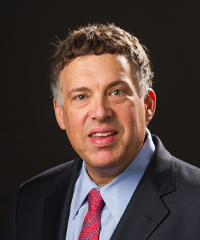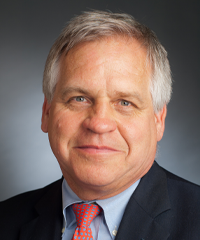Oncology
Non-Small Cell Lung Cancer
Working Toward a Cure in Non–Small Cell Lung Cancer
Advances in the treatment of non–small cell lung cancer (NSCLC) are driving efforts to prolong survival and, ultimately, cure patients. Major areas of research include the incorporation of immunotherapy and targeted agents in the neoadjuvant and adjuvant settings.
I do not believe that the incidence of lung cancer has changed markedly in recent years, but what has changed is that outcomes have improved, especially for patients with particular types of lung cancer. For example, individuals with NSCLC, high PD-L1 expression, and high tumor mutation burden are likely to be very responsive to immunotherapy, and, in some of these patients, the cancer sometimes never comes back after they receive checkpoint inhibitors, even though they presented with metastatic disease. That is pretty amazing.
We lack a good definition of cure in lung cancer, and there is a reluctance to use terms such as cure or cure rates. However, there is a compelling argument that is being made about the intrinsic clinical relevance of meaningful improvements in disease-free survival (DFS) to patients, specifically as it relates to cure and curative potential. This topic was the subject of a wonderful article by Sobrero and colleagues in the Journal of Clinical Oncology.
In my view, being disease free at 5 years is a very significant benchmark in that regard, if not a cure. Regardless of where you stand in that debate, I think that we need to let our patients know that it is possible to have these kinds of outcomes—that the possibility exists—while also clearly conveying that this, by no means, applies to the majority of patients.
Such outcomes are even more likely in individuals with locally advanced cancer, in whom we are trying to build on the existing cure rate by using neoadjuvant and adjuvant therapies. Unfortunately, in the metastatic setting, we are starting with a baseline cure rate of 0 and building up from there with our newer therapies. The addition of a checkpoint inhibitor or a targeted therapy to local therapies such as radiation, surgery, and concurrent chemotherapy has also increased the cure rates. This has probably been shown the most clearly in patients with locally advanced lung cancer who were not surgical candidates. With these improved therapies, the rates of patients who are cancer free at 5 years have increased from approximately 10% before to nearly 30% now for stage III disease.
As oncologists, we must remember that every single patient wants a cure. Patients do not enter into the care of a physician hoping to live just 1 month longer than the median or hoping that their overall survival improves by 3 months with a statistically significant difference vs the comparator. Those are things that oncologists care about. Patients want to continue their lives and achieve the goals that they have set for themselves without cancer getting in the way. To a patient, DFS is their number one priority. They want to be disease free, and, ideally, they want to be disease free forever. The other word for that is cure.
Like my colleagues, I think that we need to start by asking what cure really means. I believe that it means being more at risk for having some other disease rather than your cancer. Both immunotherapy and targeted therapy are paradigm shifts that have had a great impact on the most advanced stages of lung cancer, and they are now being moved to the treatment of earlier stages of disease. I think that this is how we are going to cure lung cancer—by using our best modalities earlier, along with chemotherapy, radiation, and surgery.
We have several examples of success with this approach, including the use of adjuvant therapy for EGFR-mutated disease in the phase 3 ADAURA trial, where we saw a prolonged DFS benefit, a reduced risk of local and distant recurrence, and an improved central nervous system DFS with adjuvant osimertinib in resected EGFR-mutated NSCLC. Some people have DFS that is so long that their survival has improved. We are also seeing quite profound data in the neoadjuvant setting from the phase 3 CheckMate 816 and AEGEAN clinical trials. So, we want to try to cure early disease up front, with our best drugs, rather than trying to cure metastatic disease later.
Now is the time to think very carefully about more screening. I think that this clearly is where the field is moving (ie, a much earlier detection of disease and treatment). We have low-dose computed tomography, and it certainly has not been taken up as much as it could be, and newer molecular screening methods should also continue to be explored.
We would like to be able to cure all of our patients with lung cancer, and we will continue working toward that ultimate goal. One of the major items that has been publicized in the last year that has fundamentally changed our approach to curing NSCLC is being able to give immunotherapy plus chemotherapy to patients who have locally advanced disease. The hallmark data came from the CheckMate 816 trial, where they give chemotherapy plus nivolumab. The past treatments used chemotherapy plus chest radiation or chemotherapy alone, and 5% or less of patients achieved a major or complete pathological response when the lung cancer was resected. But with the addition of immunotherapy to chemotherapy in the CheckMate 816 trial, 24% of patients had a pathological complete response. All of us now embrace the idea of giving chemotherapy and immunotherapy followed by a surgical resection for patients with locally advanced NSCLC. The question that still remains is: Do we give immunotherapy after the resection, depending on a patient’s response?
The other important development is that the EGFR inhibitor osimertinib is quite effective for patients with disseminated NSCLC. Osimertinib typically prevents the cancer from growing for approximately 1.5 years in patients with disseminated disease and reduces the risk of it recurring by 77% in those with resected NSCLC. The finding that adjuvant osimertinib works so well in patients with EGFR mutations gives us hope that other targeted therapies will work in a similar fashion in individuals with other types of mutations, such as ALK, ROS1, and RET rearrangements. These concepts are currently being tested.
Duffy MJ. Circulating tumor DNA (ctDNA) as a biomarker for lung cancer: early detection, monitoring and therapy prediction. Tumour Biol. 2023 May 26. doi:10.3233/TUB-220044
Felip E, Altorki N, Zhou C, et al. Overall survival with adjuvant atezolizumab after chemotherapy in resected stage II-IIIA non-small-cell lung cancer (IMpower010): a randomised, multicentre, open-label, phase III trial. Ann Oncol. 2023;34(10):907-919. doi:10.1016/j.annonc.2023.07.001
Forde PM, Spicer J, Lu S, et al; CheckMate 816 Investigators. Neoadjuvant nivolumab plus chemotherapy in resectable lung cancer. N Engl J Med. 2022;386(21):1973-1985. doi:10.1056/NEJMoa2202170
García-Pardo M, Czarnecka-Kujawa K, Law JH, et al. Association of circulating tumor DNA testing before tissue diagnosis with time to treatment among patients with suspected advanced lung cancer: the ACCELERATE nonrandomized clinical trial. JAMA Netw Open. 2023;6(7):e2325332. doi:10.1001/jamanetworkopen.2023.25332
Hardenberg MC, Patel B, Matthews C, et al. The value of disease-free survival (DFS) and osimertinib in adjuvant non-small-cell lung cancer (NSCLC): an international Delphi consensus report. ESMO Open. 2022;7(5):100572. doi:10.1016/j.esmoop.2022.100572
Herbst RS, Wu Y-L, John T, et al. Adjuvant osimertinib for resected EGFR-mutated stage IB-IIIA non-small-cell lung cancer: updated results from the phase III randomized ADAURA trial [published correction appears in J Clin Oncol. 2023;41(22):3877]. J Clin Oncol. 2023;41(10):1830-1840. doi:10.1200/JCO.22.02186
Heymach JV, Harpole D, Mitsudomi T, et al. AEGEAN: a phase 3 trial of neoadjuvant durvalumab + chemotherapy followed by adjuvant durvalumab in patients with resectable NSCLC [abstract CT005]. Abstract presented at: American Association for Cancer Research Annual Meeting 2023; April 14-19, 2023, Orlando, FL.
Johnson ML, Cho BC, Luft A, et al; POSEIDON Investigators. Durvalumab with or without tremelimumab in combination with chemotherapy as first-line therapy for metastatic non-small-cell lung cancer: the phase III POSEIDON study. J Clin Oncol 2023;41(6):1213-1227. doi:10.1200/JCO.22.00975
Kris MG, Mitsudomi T, Peters S. Adjuvant therapies in stages I–III epidermal growth factor receptor-mutated lung cancer: current and future perspectives. Transl Lung Cancer Res. 2023;12(4):824-836. doi:10.21037/tlcr-22-723
Prosper AE, Kammer MN, Maldonado F, Aberle DR, Hsu W. Expanding role of advanced image analysis in CT-detected indeterminate pulmonary nodules and early lung cancer characterization. Radiology. 2023;309(1):e222904. doi:10.1148/radiol.222904
Sobrero AF, Pastorino A, Zalcberg JR. You’re cured till you’re not: should disease-free survival be used as a regulatory or clinical end point for adjuvant therapy of cancer? J Clin Oncol. 2022;40(35):4044-4047. doi:10.1200/JCO.22.01531
Spigel DR, Faivre-Finn C, Gray JE, et al. Five-year survival outcomes with durvalumab after chemoradiotherapy in unresectable stage III NSCLC: an update from the PACIFIC trial. J Clin Oncol. 2021;39(suppl 15):8511. doi:10.1200/JCO.2021.39.15_suppl.8511
Tachihara M, Tsujino K, Ishihara T, et al; West Japan Oncology Group (WJOG). Durvalumab plus concurrent radiotherapy for treatment of locally advanced non-small cell lung cancer: the DOLPHIN phase 2 nonrandomized controlled trial. JAMA Oncol. 2023 Sep 7:e233309. doi:10.1001/jamaoncol.2023.3309
U.S. Preventive Services Task Force. Lung cancer: screening. Accessed November 8, 2023. Updated March 09, 2021. Accessed November 9, 2023. https://www.uspreventiveservicestaskforce.org/uspstf/recommendation/lung-cancer-screening













